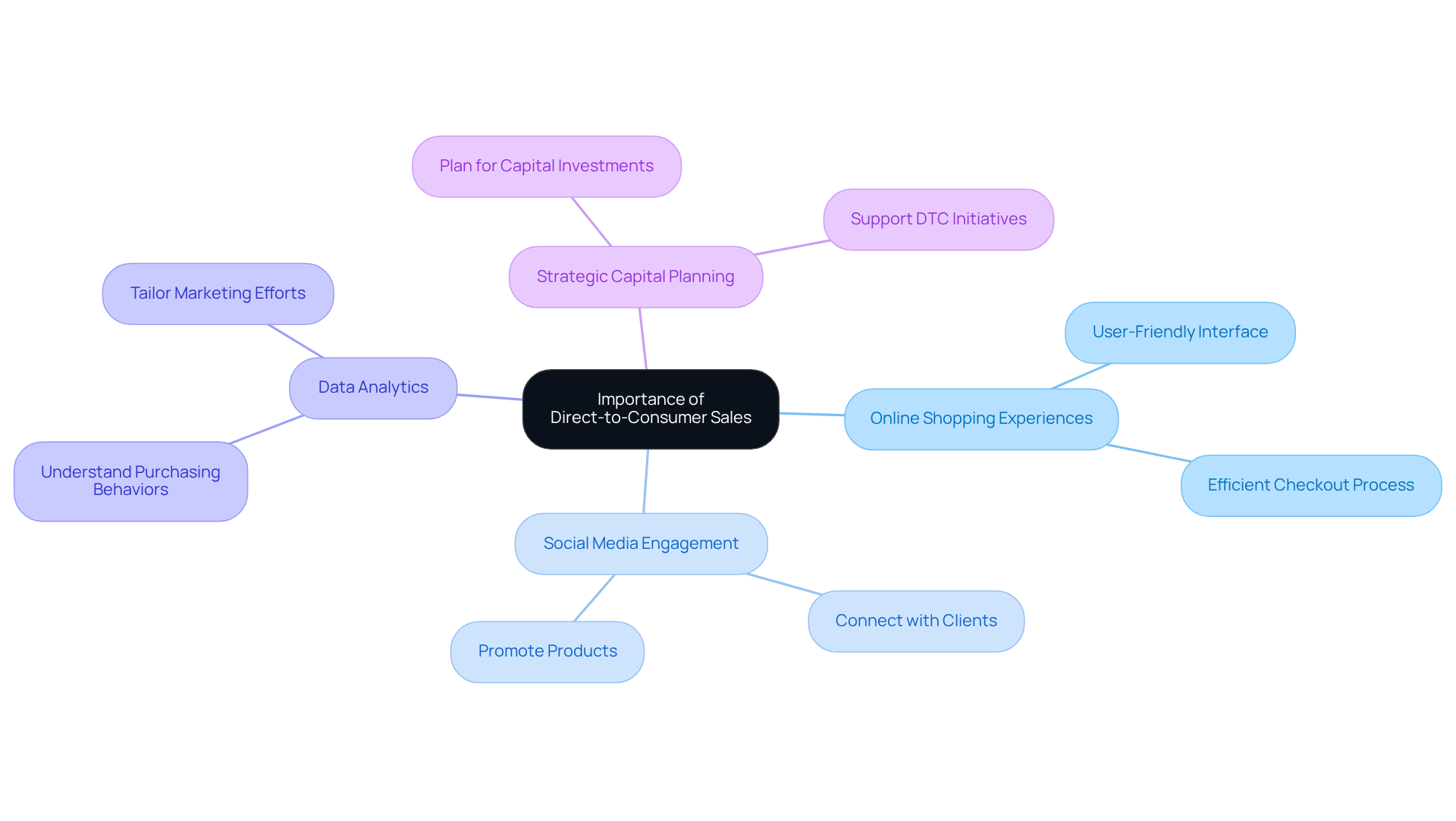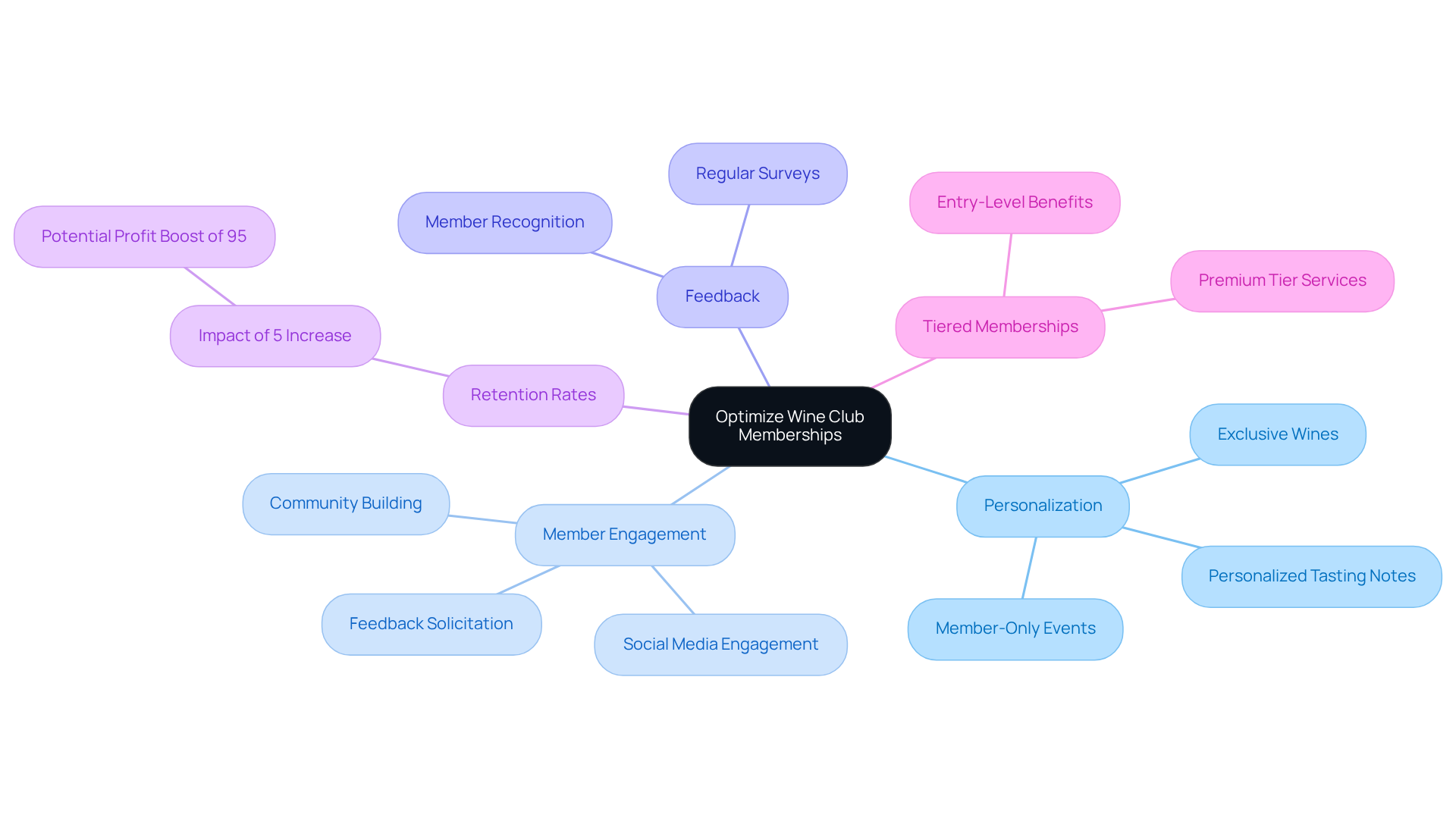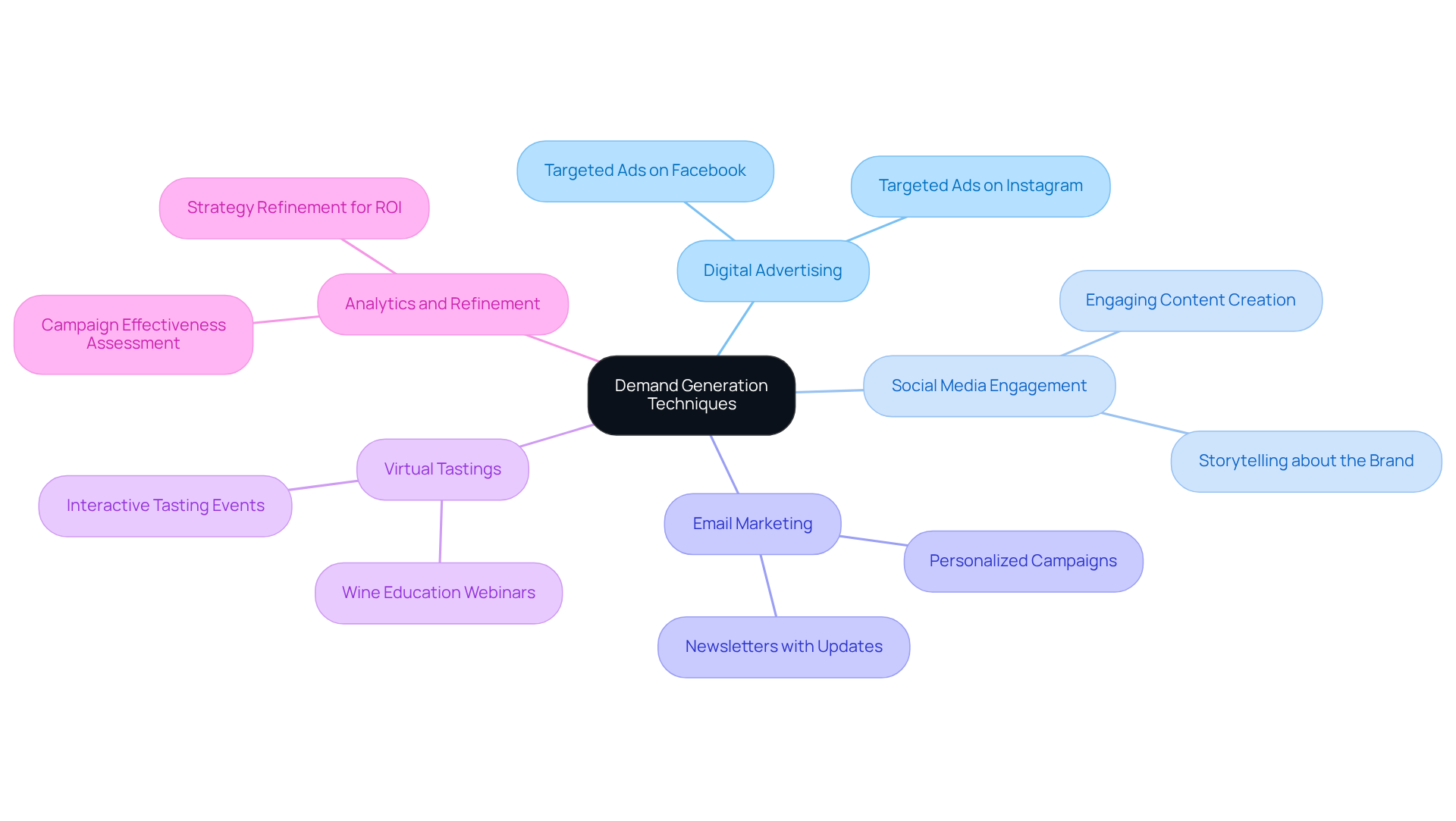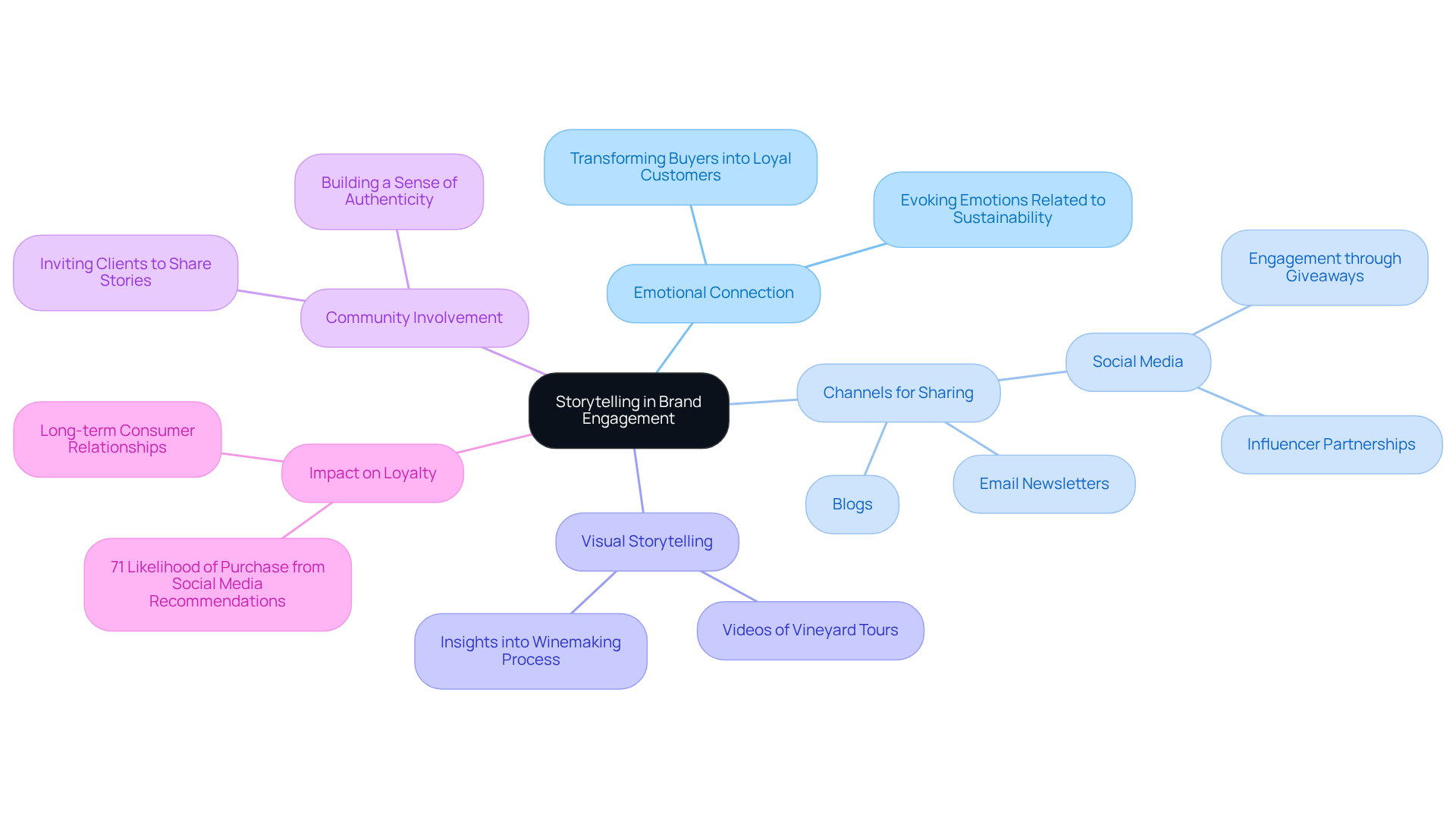Overview
This article presents proven marketing strategies designed to significantly enhance direct sales for wineries. Engaging directly with consumers is not just beneficial; it is essential for boosting profit margins and fostering customer loyalty. Key strategies outlined include:
- The creation of seamless online shopping experiences
- Effective utilization of social media for consumer engagement
- The strategic application of data analytics
Together, these elements cultivate a loyal customer base and drive consistent growth in an increasingly competitive market. By adopting these approaches, wineries can position themselves for sustained success.
Introduction
Direct sales have emerged as a vital lifeline for wineries striving to thrive in an increasingly competitive market. Not only do they offer enhanced profit margins, but they also present an invaluable opportunity to forge lasting relationships with consumers. By adopting innovative marketing strategies, wineries can effectively transform casual customers into loyal supporters, thereby ensuring sustained growth and resilience amid fluctuating market conditions. Yet, with a plethora of approaches at their disposal, how can wineries adeptly leverage these strategies to maximize their direct-to-consumer sales and cultivate a dedicated clientele?
Understand the Importance of Direct-to-Consumer Sales
Direct sales for wineries have emerged as a cornerstone for vineyards, particularly within a competitive market landscape. By engaging directly with customers, vineyards can significantly enhance profit margins, cultivate stronger relationships with clients, and acquire invaluable insights into consumer preferences. Recent reports indicate that direct sales for wineries constitute a substantial share of total wine sales, underscoring the imperative for producers to develop robust strategies. Enocap highlights the critical importance of establishing sustainable direct sales for wineries that drive consistent growth and transform casual buyers into devoted club members through proven methodologies.
To effectively implement DTC sales channels, wineries should prioritize the following key strategies:
- Create Seamless Online Shopping Experiences: Ensure that the online purchasing process is user-friendly and efficient.
- Utilize Social Media for Engagement: Leverage social media platforms to connect with clients and promote products.
- Leverage Data Analytics: Use data analytics to understand purchasing behaviors and tailor marketing efforts accordingly.
- Incorporate Strategic Capital Planning: Plan for necessary capital investments to support DTC initiatives, ensuring sustainable growth.
This comprehensive strategy not only boosts immediate sales but also fosters a loyal customer base capable of supporting the establishment through market fluctuations.

Optimize Wine Club Memberships for Increased Loyalty
Wine clubs present a significant opportunity for producers to cultivate loyalty and establish a steady income stream through direct-to-consumer strategies. To fully leverage these memberships, it is vital to prioritize personalization and member engagement. This can be accomplished by providing:
- Exclusive wines
- Personalized tasting notes
- Organizing member-only events that foster a sense of community
Enocap's strategic capital advisory services can further elevate these efforts by offering tailored solutions for debt, equity, or acquisition opportunities, ensuring that family-owned vineyards possess the necessary resources to thrive.
Regularly soliciting feedback from members is crucial for refining offerings and aligning them with consumer preferences. Research indicates that members who feel recognized are twice as likely to remain loyal. Data reveals that establishments with well-structured clubs enjoy higher retention rates, with even a modest 5% increase in retention potentially boosting profits by as much as 95%. Implementing tiered membership levels can further motivate customers to upgrade, with:
- Entry-level members receiving smaller shipments and tasting discounts
- Premium tier members benefiting from exclusive services
By crafting an engaging club experience that incorporates brand storytelling and leveraging Enocap's effective strategies for direct-to-consumer engagement, producers can transform occasional buyers into devoted supporters, ensuring sustained success in a competitive landscape. Moreover, the global subscription economy is projected to reach $1.5 trillion by 2025, underscoring the significance of optimizing wine club memberships within this expanding market.

Implement Effective Demand Generation Techniques
To effectively generate demand, wine producers must adopt a multi-channel marketing strategy that integrates digital advertising, social media engagement, and email marketing campaigns. Targeted ads on platforms such as Facebook and Instagram are essential for reaching potential customers by aligning with their interests and behaviors. By crafting engaging content that narrates the establishment's story, principles, and unique offerings, producers not only attract interest but also drive traffic to their websites.
Furthermore, organizing virtual tastings or wine education webinars serves as powerful demand generation tools, fostering direct connections with buyers while showcasing products. Leveraging analytics to assess the effectiveness of these campaigns allows vineyards to refine their strategies, ensuring maximum return on investment and sustained growth in a competitive market.

Leverage Compelling Storytelling to Enhance Brand Engagement
Storytelling serves as a vital instrument for vineyards aiming to forge emotional connections with their buyers. By narrating the winery's rich history, the passion that fuels the winemaking process, and the distinctive qualities of each wine, wineries can craft compelling stories that resonate with potential customers. This storytelling can be effectively shared through diverse channels, including:
- Social media
- Blogs
- Email newsletters
For example, visual storytelling—such as videos that showcase vineyard tours or provide insights into the winemaking process—can significantly boost audience engagement. Furthermore, inviting clients to share their own stories and experiences fosters a sense of community and authenticity surrounding the brand. Research indicates that emotional engagement can transform casual buyers into loyal customers, with 71% of individuals more likely to purchase based on social media recommendations. By leveraging the power of storytelling and integrating strategic capital planning, wineries can develop a strong brand identity that not only captivates consumers but also drives direct sales for wineries and fosters long-term loyalty.

Conclusion
Boosting direct sales for wineries is not merely a trend; it is a necessity in today's competitive landscape. By prioritizing direct-to-consumer strategies, wineries can optimize their sales, enhance profitability, and forge lasting relationships with their customers. This article underscores the importance of:
- Creating seamless online shopping experiences
- Engaging through social media
- Leveraging data analytics
- Implementing effective demand generation techniques
Furthermore, optimizing wine club memberships through personalization and storytelling can significantly elevate customer loyalty and retention.
The key arguments emphasize the necessity of a multi-faceted approach that encompasses:
- Capital planning
- Community-building through exclusive offerings
- The compelling power of storytelling
Wineries that adopt these strategies stand to not only increase their immediate sales but also cultivate a devoted customer base capable of weathering market fluctuations. The insights presented highlight the potential for substantial growth in direct sales, particularly as consumer preferences shift towards personalized experiences and emotional connections with brands.
In conclusion, the significance of effective marketing strategies for wineries is paramount. As the global subscription economy expands, it becomes increasingly vital for wineries to embrace these proven methodologies. By prioritizing direct sales and customer engagement, wineries can secure their position in the market and ensure long-term success. Embracing these strategies today will pave the way for a prosperous future, transforming casual buyers into loyal patrons and driving sustainable growth for years to come.
Frequently Asked Questions
Why are direct-to-consumer (DTC) sales important for wineries?
Direct-to-consumer sales are crucial for wineries as they enhance profit margins, build stronger relationships with clients, and provide insights into consumer preferences. They also represent a significant portion of total wine sales, making it essential for producers to develop effective strategies.
What are some key strategies for implementing DTC sales channels in wineries?
Key strategies for implementing DTC sales channels include creating seamless online shopping experiences, utilizing social media for engagement, leveraging data analytics to understand purchasing behaviors, and incorporating strategic capital planning for necessary investments.
How can wineries create a better online shopping experience?
Wineries can create a better online shopping experience by ensuring that the purchasing process is user-friendly and efficient, making it easy for customers to navigate and complete their purchases.
How can social media be utilized by wineries?
Wineries can leverage social media platforms to connect with clients, promote their products, and engage with their audience, thereby enhancing brand visibility and customer interaction.
What role does data analytics play in DTC sales for wineries?
Data analytics helps wineries understand purchasing behaviors, allowing them to tailor marketing efforts and strategies to better meet the preferences and needs of their customers.
Why is strategic capital planning important for wineries?
Strategic capital planning is important as it ensures that wineries are prepared for necessary investments to support their DTC initiatives, which is vital for achieving sustainable growth and adapting to market changes.




